



UK-based tech startup Nothing has created a distinct fan following in the tech community with its products. The company's transparent design philosophy, which was earlier showcased by its phone (1) and truly wireless (TWS) earbuds - the ear (1), ear (2), and ear (stick) - stood out among the personal tech segments as a breath of fresh air.
The Nothing Phone (2) is the second generation of the Phone (1), which was launched in July. I had about three weeks to use the device, and here is my take on it:
Design and in-hand feelThe Phone (2) is 162.1 mm long, 8.6 mm thick, and weighs 201.2 gm, which didn't feel very heavy to me. However, it did feel a bit wide at 76.4 mm, and one-handed usage may seem difficult for some users.
ALSO READ: Nothing ear (2) black review: Same premium feel with balanced soundThe phone comes in two colors – Dark Grey and White. My review unit was the grey one, which showcased Nothing's translucent design philosophy to the fullest. While the glass back with Gorilla Glass 5 protection looks premium, the matte metal sides add to the feel. But the phone is very slippery and will need a case for tension-free usage.
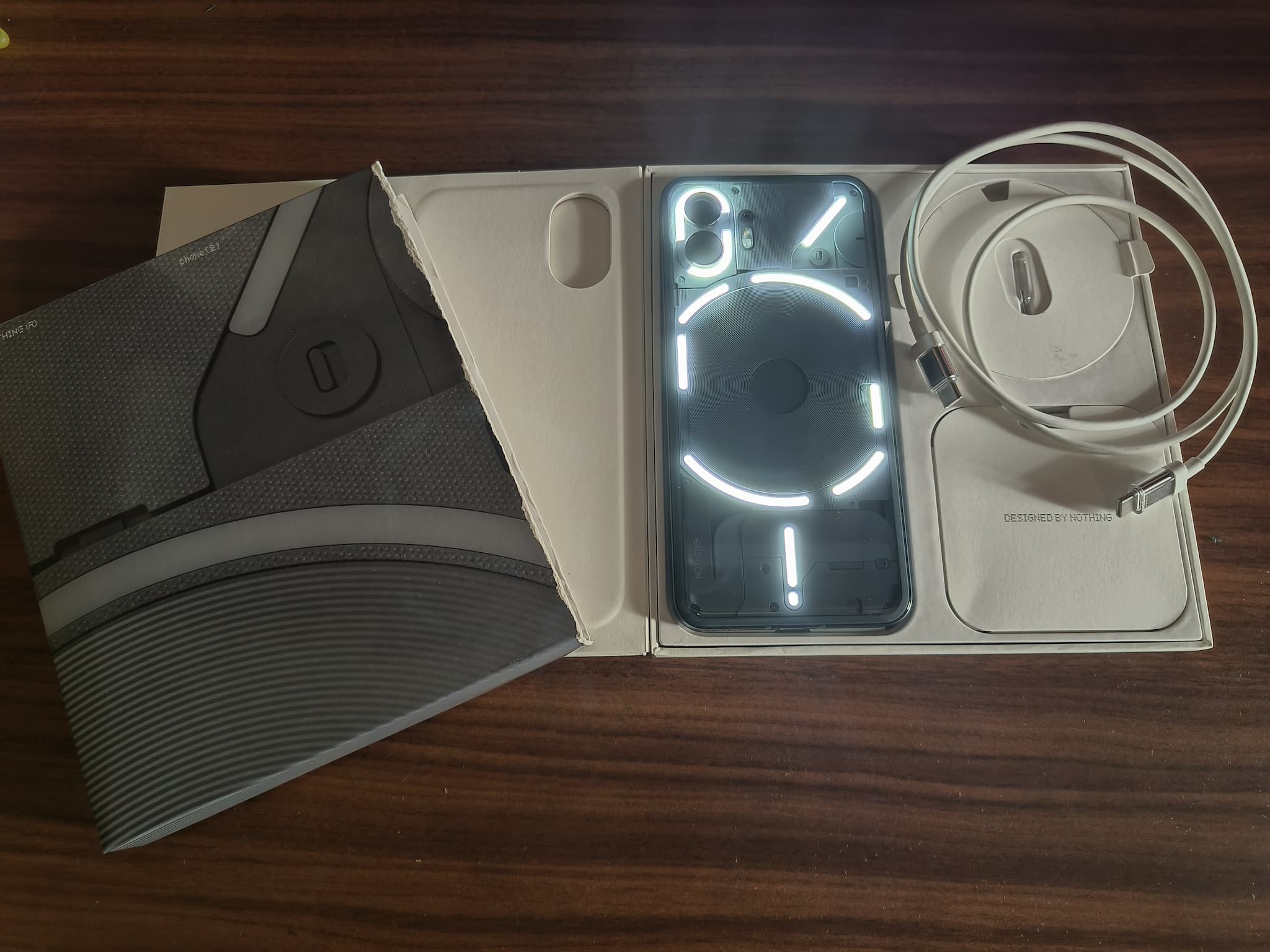 Nothing Phone (2) box contents. The Glyph lights on the back are on.
Nothing Phone (2) box contents. The Glyph lights on the back are on.The Phone (2) comes with a USB Type-C port at the bottom with a dual-speaker setup, two microphones, and dual-SIM functionality with no option for memory extension. It also packs a power button on the right, with an in-display fingerprint scanner that felt quick to unlock. The phone lacks a headphone jack and doesn't include a charger in the box.
Glyph interfaceThis is the distinctive feature that makes Nothing’s smartphones stand out from other similar-looking slabs in the market, and Phone (2) integrates it further. The Glyph interface now has the ability to be partially lit up, which helps in creating some interesting new ways to interact with the phone.
One can also flip the Phone (2) and see how much time is remaining by looking at the Glyph lights, or set a timer. The lights can also be tweaked when changing the volume, giving you an idea of the volume percentage, or assign different sequences for each contact and notification type.
The Essential Glyph notification is a feature that helps to avoid distractions. When selected contacts or apps send you a notification, a light will shine persistently until you’ve opened it. One can also use the Glyph Composer to create unique ringtones that will make the lights dance to the tune of the ringtones.
To sum up, while the Glyph interface is totally unique to Nothing and will definitely turn heads, it’s still a work in progress and may not appeal to all kinds of users.
DisplayNothing has packed the Phone (2) with a 6.7-inch, flexible OLED panel that has a resolution of 1080 by 2412 pixels. It supports the 20:9 resolution and 394 ppi pixel density. The display comes with a 120 Hz refresh rate that supports up to 1600 nits of brightness.
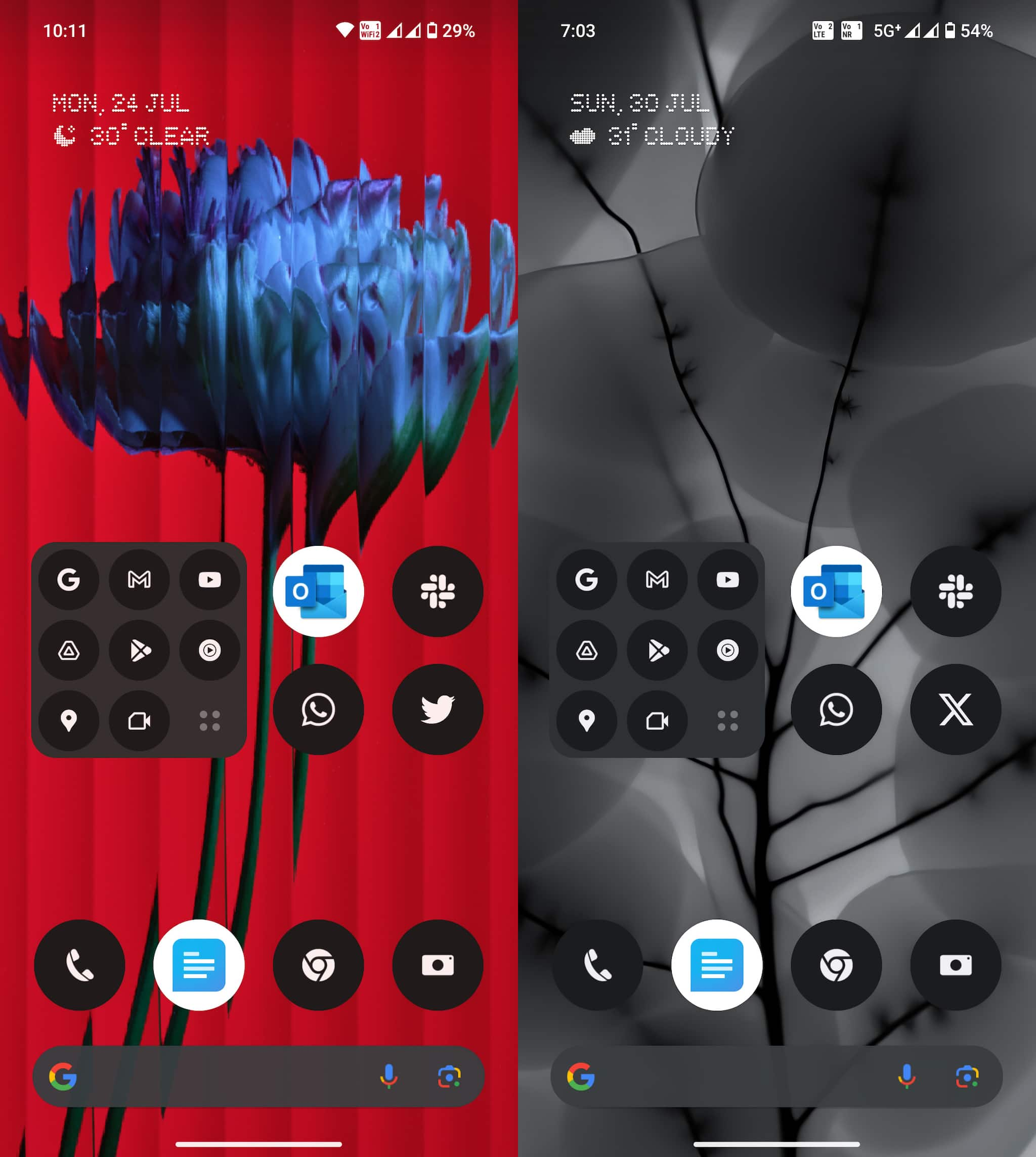 Nothing Phone (2) OS look comparison
Nothing Phone (2) OS look comparisonThe screen has very thin bezels with symmetrical sides and houses a punch-hole display on the front, looking sharp and crisp with excellent outdoor visibility. Its screen also boasts 10-bit colour depth and 100 percent of DCI-P3 and sRGB, so viewing multimedia content was pleasurable. OTT apps look vivid on the phone, as it supports Widevine L1 and is HDR-10+ capable.
PerformancePowering the Phone (2) is Qualcomm’s tried and tested Snapdragon 8+ Gen 1 processor, a 4nm chip that is a significant jump from the Snapdragon 8 Gen 1 processor. My review unit was the top-of-the-line variant with 12GB LPDDR5X RAM and 512 GB internal memory with UFS 3.1 storage speed, which costs Rs 54,999.
Despite the Phone (2)’s processor being a year old, it still felt extremely snappy in day-to-day usage with almost no lags or jitters, including app opening/closing and keeping apps in the background. I also did not notice any major heating issues, thanks to Snapdragon 8+ Gen 1’s excellent cooling mechanism. Although I was testing a pre-release unit, I got three software updates with July security patch during my review.
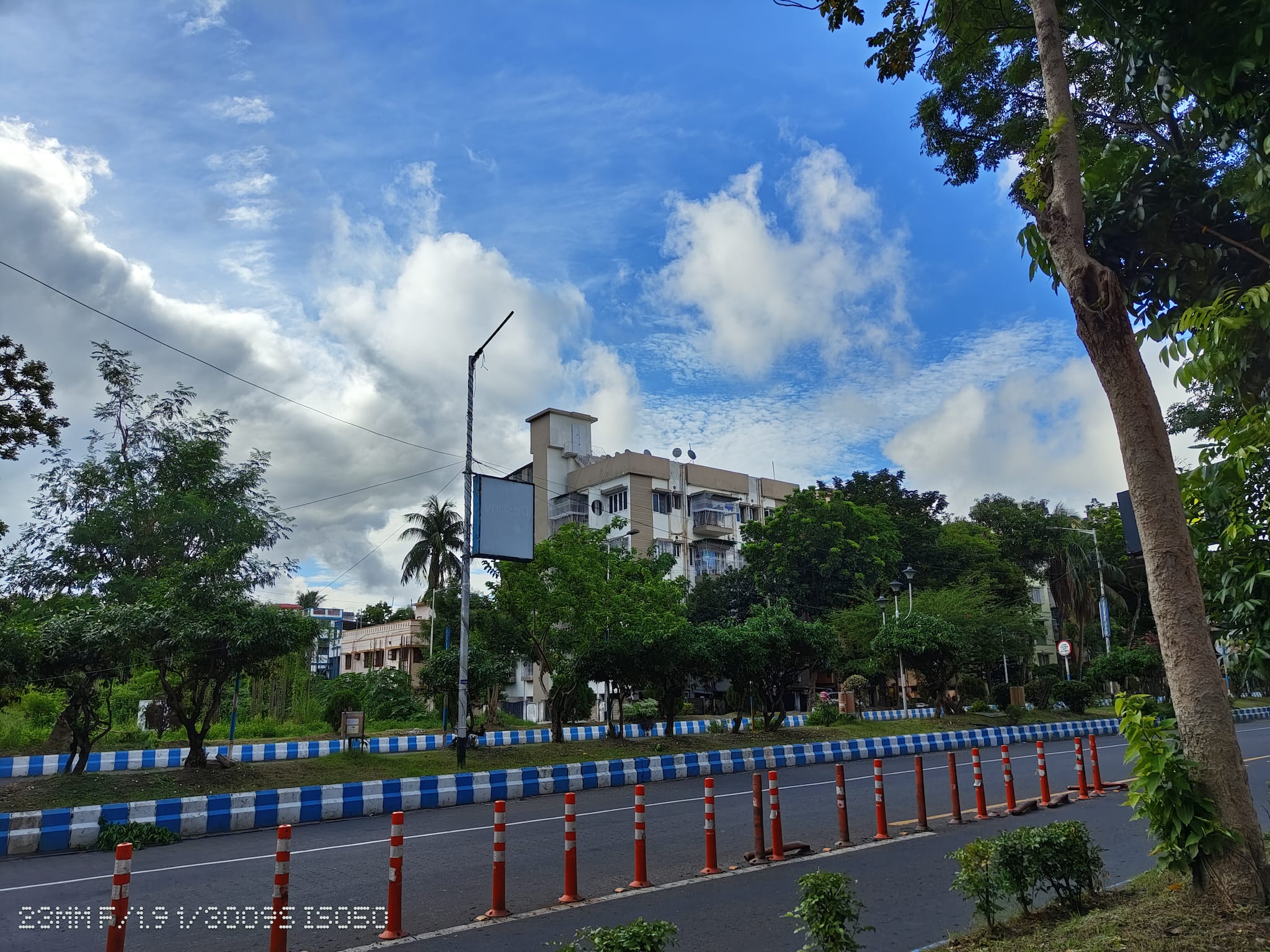 Picture taken on Nothing Phone (2) in daylight
Picture taken on Nothing Phone (2) in daylightThe phone’s dual-speaker system is also loud and adds to the immersive experience. The phone supports dual-5G with Wi-Fi calling, Bluetooth 5.3 and Wi-Fi 6, ensuring superb internet speeds. I tested the device with Jio and Airtel SIMs, and network reception and call clarity was excellent – both indoors and outdoors.
While I am not an avid gamer and the Phone (2) doesn’t target this segment either, I played some heavy games such as BGMI, Call of Duty: Mobile and Farlight 84 on the smartphone with the highest possible settings. And it could play every one of them smoothly without any major heating.
CameraFor optics, the Nothing Phone (2) packs a dual-camera setup in the rear housed inside a two-circle layout. The primary camera is the Sony IMX890 sensor, a 50-MP shooter with a large 1/1.56” sensor that allows more light and has optical image stabilization (OIS). This is the same sensor used in the recently launched OnePlus Nord 3 as well as the OnePlus 11 that was launched earlier this year.
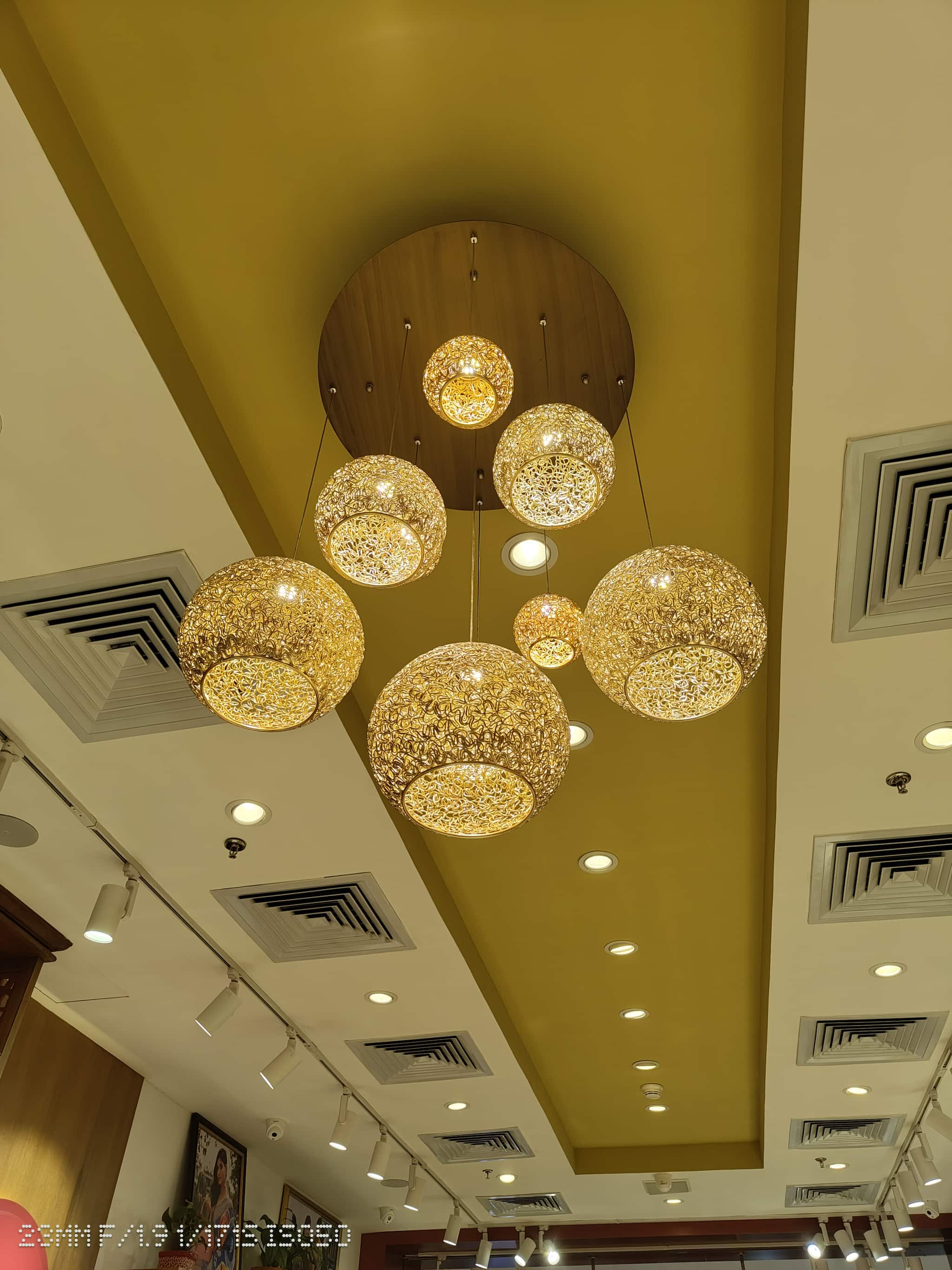 Picture taken on Nothing Phone (2) under indoor lighting conditions
Picture taken on Nothing Phone (2) under indoor lighting conditionsThe other rear camera is also 50MP but houses the Samsung JN-1 sensor, an ultrawide shooter with electronic image stabilisation (EIS) and a 114-degree field of view. The front camera is a 32-MP Sony IMX615 sensor.
While I really appreciate Nothing in staying out from the fad of packing in useless 2MP macro sensors in their smartphones, the rear camera on the Nothing Phone (2) gave me mixed results. In some settings, it did a great job but faltered in the next shot.
Clicking moving objects on the Nothing Phone (2) is a difficult task – I often got blurry images lacking detail. In the daytime, the Nothing Phone (2) manages to capture bright images with good sharpness. However, zooming in shows the noise in the pictures.
 Picture taken at night on Nothing Phone (2)
Picture taken at night on Nothing Phone (2)Images clicked at night also felt inconsistent to me – with some pictures appearing dull, leaning towards darker colour tones with most details amiss while the next one packing a punch. The ultra-wide camera is decent, even though it fails to keep up with the main camera.
The selfie camera gets most facial details including skin tones right in the daytime, but that changes starkly in low light settings wherein it delivers underexposed images that will not please most users.
The latest software update, which I received 4-5 days before my review, did improve the camera to some extent. I hope Nothing will continue to improve the camera with regular software updates.
 One more picture was taken on Nothing Phone (2) under artificial lighting conditions
One more picture was taken on Nothing Phone (2) under artificial lighting conditionsWhen it comes to video recording, the smartphone can shoot 4K video at 60fps with OIS and EIS image stabilisation. Videos captured in daylight reproduce good clarity, dynamic range and exposure. Colour accuracy was an area where Nothing did struggle and I noticed a bit of a yellow tinge in my videos. At night, the exposure captured 4K video at 30fps with good noise reduction and decent details.
BatteryThe Nothing Phone (2) comes with a 4700mAh dual-cell battery that performs superbly, thanks to solid OS optimisations. It easily lasted a day with moderate usage, and even surpassed a day in some instances. The battery supports 15-watt Qi wireless charging and 5-watt reverse charging.
I got a screen on time averaging from five to six-and-a-half hours, which is impressive.
However, the charging speed could have been better. With a full charging time of almost an hour at 45W speed, the device might leave you wanting more if you're always on the go.
SoftwareAnother major USP of the Phone (2) is its OS, Nothing OS 2.0. It is a smooth version of stock Android 13 with a layer of Nothing OS 2 on top, adding some nifty customizations that clearly help to make the phone stand out. The black and white wallpapers with vintage fonts for the widgets will surely appeal to users looking for something different in the Android world.
 Nothing OS 2.0 has a distinct monochrome interface
Nothing OS 2.0 has a distinct monochrome interfaceThe OS seemed fast and snappy with almost no lags throughout my entire usage, with superb network reception. There are no junk apps, so one doesn’t need to worry about any ads or spam posts inside the OS. The call quality was also very good, but the in-call volume could have been slightly louder.
The UI is highly responsive and extremely polished and shows the dedication and effort put in by Nothing. Every app, no matter how heavy or light, opens with the same consistency without stuttering. One has to experience using the phone to fully appreciate the smooth software.
Nothing promises three years of major OS updates and four years of security updates on the device.
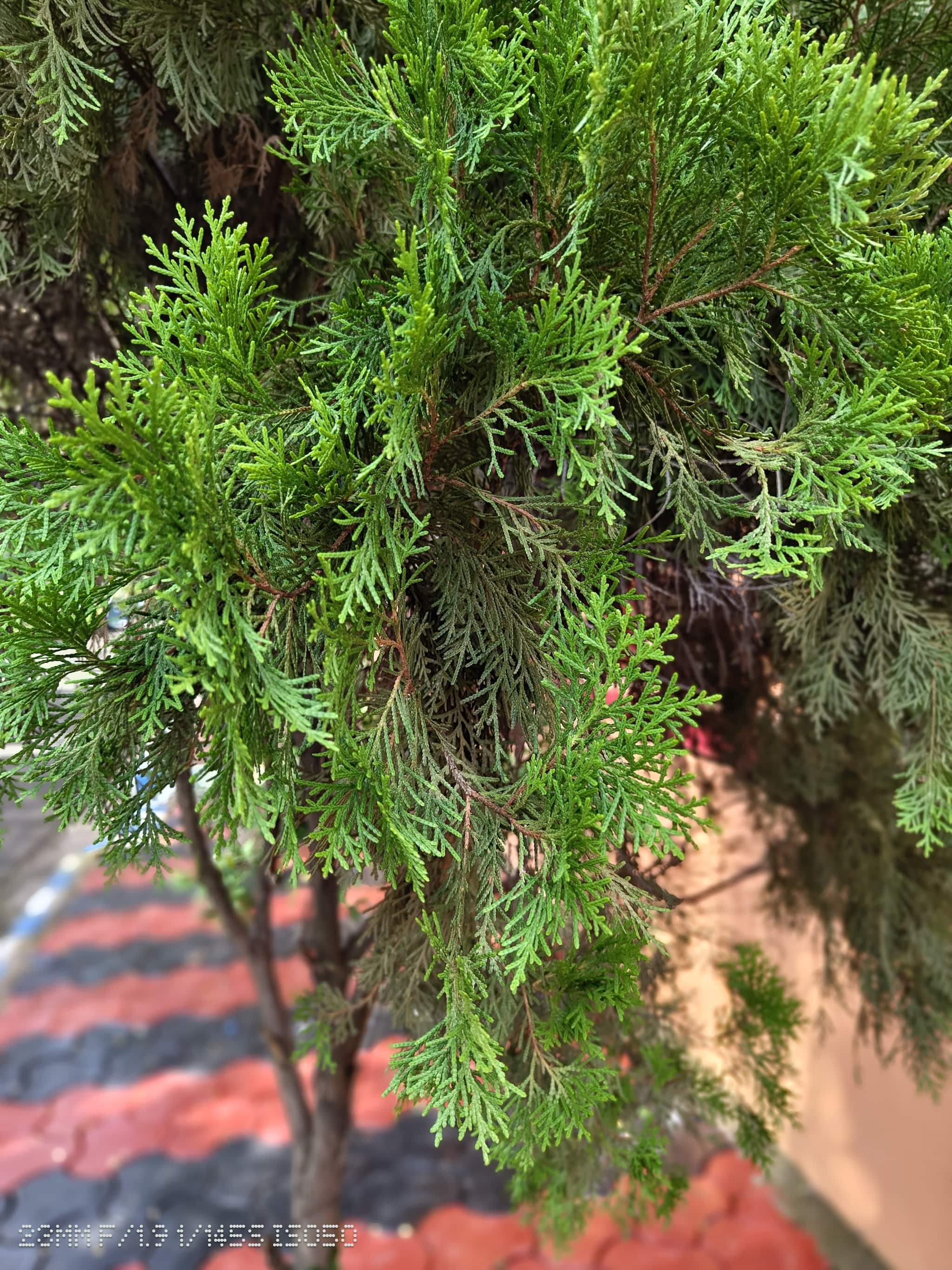 Portrait mode on the Nothing Phone (2)
Portrait mode on the Nothing Phone (2)However, Nothing OS 2.0 is still not totally perfect. I did find some bugs – the auto-rotate feature sometime becomes too responsive and rotates with the slightest movement, the screen doesn’t light up fully during incoming notifications, and Nothing’s custom icon pack needs wider support for apps.
VerdictTo sum it up, the Nothing Phone (2) has a lot going for it – a unique design, excellent battery life, and a smooth and polished OS that will appeal to Android purists. However, the camera still feels inconsistent, and the Glyph lights may seem a bit too loud for some users. At the current price, the phone can face stiff competition from the likes of the Google Pixel 7a and the OnePlus 11R.

Discover the latest Business News, Sensex, and Nifty updates. Obtain Personal Finance insights, tax queries, and expert opinions on Moneycontrol or download the Moneycontrol App to stay updated!
Find the best of Al News in one place, specially curated for you every weekend.
Stay on top of the latest tech trends and biggest startup news.